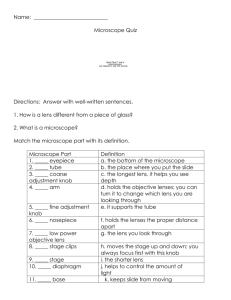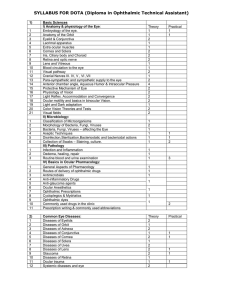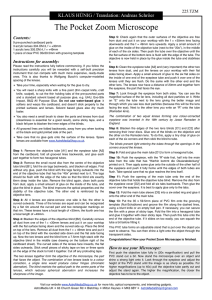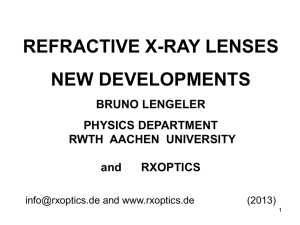The Microscope: Its Parts and Their Functions
advertisement
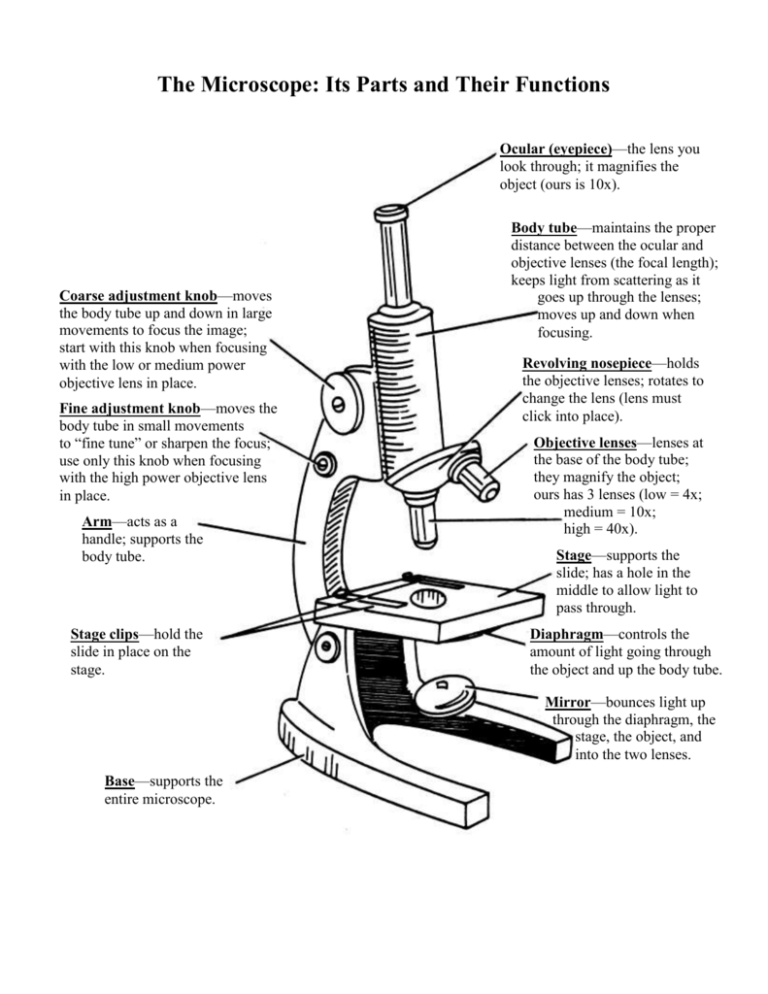
The Microscope: Its Parts and Their Functions Ocular (eyepiece)—the lens you look through; it magnifies the object (ours is 10x). Coarse adjustment knob—moves the body tube up and down in large movements to focus the image; start with this knob when focusing with the low or medium power objective lens in place. Fine adjustment knob—moves the body tube in small movements to “fine tune” or sharpen the focus; use only this knob when focusing with the high power objective lens in place. Arm—acts as a handle; supports the body tube. Stage clips—hold the slide in place on the stage. Body tube—maintains the proper distance between the ocular and objective lenses (the focal length); keeps light from scattering as it goes up through the lenses; moves up and down when focusing. Revolving nosepiece—holds the objective lenses; rotates to change the lens (lens must click into place). Objective lenses—lenses at the base of the body tube; they magnify the object; ours has 3 lenses (low = 4x; medium = 10x; high = 40x). Stage—supports the slide; has a hole in the middle to allow light to pass through. Diaphragm—controls the amount of light going through the object and up the body tube. Mirror—bounces light up through the diaphragm, the stage, the object, and into the two lenses. Base—supports the entire microscope.

